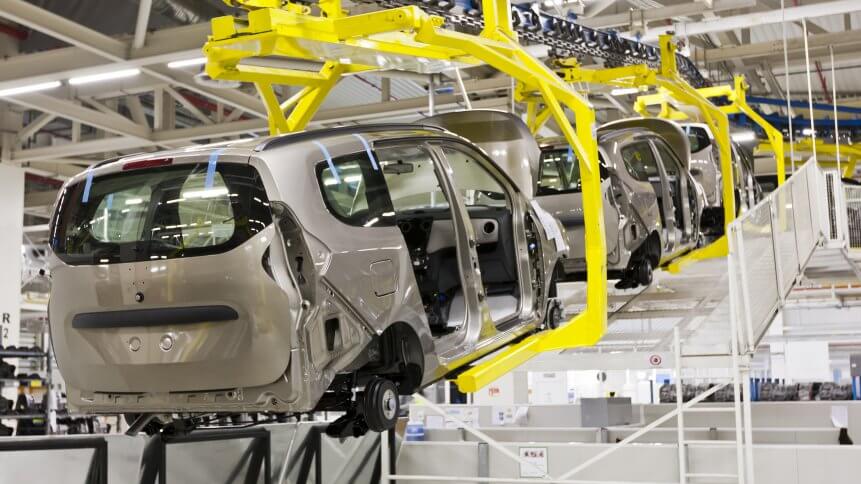Manufacturers are leading hybrid cloud adoption

The manufacturing industry is at an “innovation impasse”— the sector wants to innovate and transform on the path to Industry 4.0, but ingrained legacy IT systems are making this movement difficult.
Facing a constant trade-off between meeting productivity goals and investing in future growth, the industry is pursuing solutions which can help them transition without an expensive ‘big bang’ implementation that could put the brakes on operations.
Hybrid cloud technology is one such solution and, according to a new survey of 2,300 IT decision makers across 337 worldwide manufacturing and production organizations, manufacturing is outpacing the global cross-industry average for the tech’s adoption.
While hybrid cloud’s 19 percent penetration among manufacturing and production companies is above the global average, manufacturers plan to more than double hybrid cloud deployments to 45 percent penetration in two years. That vastly outpaces the forecasted global growth of 4 percent.
Nutanix SVP of Global Marketing, Chris Kozup said that while the manufacturing industry still faces obstacles in transitioning to multi-cloud use, the study shows that organizations are ready to take the lead in IT innovation.
“Manufacturers are investing in modernizing their IT stack, and adopting industry 4.0 solutions to keep up with ever-changing business demands in areas like production and supply chain management,” said Kozup.
As manufacturers pursue the technologies associated with ‘Industry 4.0’— such as automation, IIoT, and cloud technology— they must “avoid the beaten path” of finding short-term fixes, says Nutanix.
Instead, they should look to long-term solutions that enabled automation, enhanced use of data and improvements to customer experience.
“A hybrid cloud infrastructure gives manufacturers a fresh approach to modernizing legacy applications and services, enabling manufacturing IT leaders to focus on their long-term investments in big data, IoT, and next-generation enterprise applications,” Kozup said.
YOU MIGHT LIKE

Are cloud migrations meeting expectations?
While penetration of hybrid cloud is still less than a fifth, the speed, flexibility, and localization of distributed cloud saw the model favored as the “ideal IT model” by 91 percent of respondents.
The disparity stems from challenges in transitioning to the model— mirroring those of other sectors, these include limitations in application mobility, data security/compliance, performance, management and a shortage of IT talent.
Uptake of hybrid cloud solutions in manufacturing is also a testament to the razor-thin margins the sector must work with.
Organizations that use public cloud spend 26 percent of their annual IT budget on solutions, says Nutanix, and that’s expected to rise to nearly a third by 2021. Hybrid cloud allows them to get control of that spend.
The same bid for full control is also seeing manufacturing ahead of the curve in private cloud adoption. Fifty-six percent of manufacturers surveyed said that they run enterprise applications in a private cloud, outpacing the global average by 7 percent.









